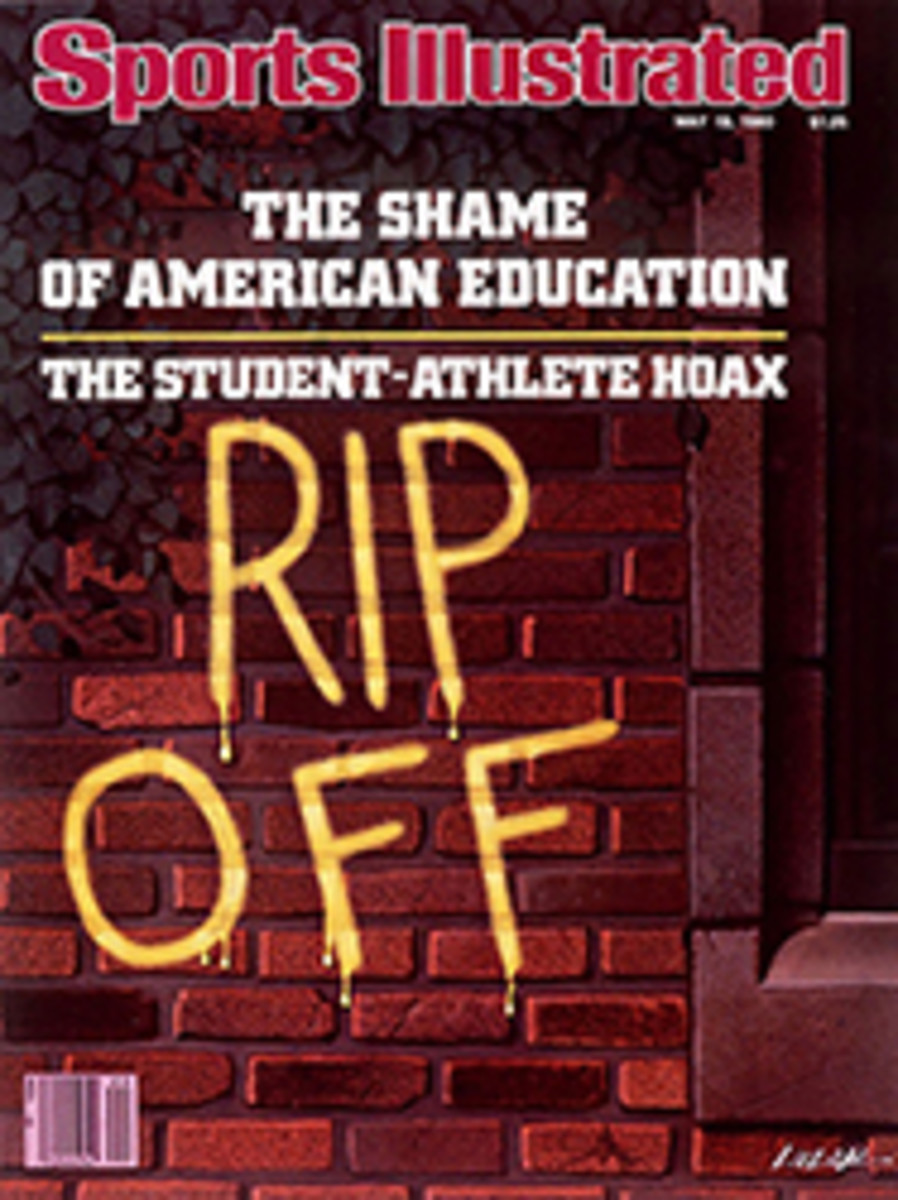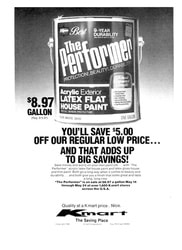
NAKED TRUTH CONCERNING A FLASHY RUNNER OF THE SUB-FOUR-MINUTE MILE
Everyone knows that Roger Bannister is credited with having run the first sub-four-minute mile. Yet stories persist that the feat was actually, if unofficially, accomplished before Bannister did it. Probably the most widely known concerns Glenn Cunningham, who in 1930, 24 years before Bannister ran his 3:59.4, was told by his high school coach, Roy Varney, that he had broken four minutes in a time trial. Some say Varney mistakenly timed Cunningham over 1,500 meters or that he misread his stopwatch, or that he used a coach's ploy, wildly exaggerating Cunningham's time to give him confidence.
I remember reading of a sub-four-minute mile in Ripley's Believe It Or Not. This run supposedly took place in the 19th century. According to Ripley, a Pawnee Indian named Koo-tah-we-cots-oo-lel-e-hoo-la-shar (presumably, his friends called him Clyde) ran a measured mile along a dirt road in less than four minutes, with his time recorded by U.S. Army observers. No other details were given.
Maybe Cunningham really did it, and maybe the Indian did, too. We'll never be sure. I'd now like to add a pre-Bannister, sub-four-minute-mile story of my own. I didn't run it myself. My friend Doug did.
Doug was a sprinter, powerfully built with thickly muscled arms and legs and a broad chest. He tried the mile only once. We were high school students in Honolulu then, and his notable run occurred just months before Bannister's.
These were the circumstances: Doug needed quick money, at least $100, something to do with repairs on his car. We talked things over and came up with an idea. He would run one mile nude, wearing a rubber ape mask, down Kalakaua Avenue, Waikiki's main drag, at eight o'clock on a Saturday night. The name of the thoroughfare would remain secret, of course, until immediately before Doug took out. I was his business manager. I discreetly spread the word—promising only that the run would take place on "a busy street"—and collected a dollar apiece from interested customers. On the appointed Saturday morning I designated a place where everyone was to gather at seven p.m. There I would check my list of those who had paid, take money from those who hadn't and lead everyone to the starting point.
The preliminaries went smoothly. Doug and I realized that word of such a stunt would spread fast, but because only he and I knew exactly where he would run, we thought it would be safe enough. No matter what happened or who saw it, if he wasn't caught, how could anyone prove who it had been? The rubber ape mask would cover his entire head. He had altered it only slightly, enlarging the holes around the mouth and nose for easier breathing.
So at 7:45 p.m. Saturday, I led a long procession of cars toward Waikiki. We all found parking spaces a few blocks away and then walked toward Kalakaua Avenue. Timing was crucial, because a crowd of more than 100 high school boys couldn't very well go unnoticed. I hoped to reach the spot where the run was to start a minute or two before eight. There was a dark, narrow alley that opened onto Kalakaua in the middle of its brightest, busiest stretch. Precisely at eight, Doug would come out of the alley, turn right and start his mile. We had measured the distance with a car, and it actually came out to a fraction over a mile. A few hundred yards from where he would turn off Kalakaua we had hidden some clothes.
Had it not been for the police, everything probably would have gone off perfectly. Kalakaua was as mobbed as usual that night. There were the tourists, mostly middle-aged or elderly, and many local young couples wandering in and out of the bars, restaurants and night clubs in the area. When the crowd I was leading hit the street, there were some curious looks, but no one seemed to take special note of us. I checked my watch. It was 30 seconds before eight. This agreed with a clock above a nearby souvenir store. Doug and I had synchronized our watches. I kept a close eye on my watch. Precisely at eight, to the second, I heard someone scream, "Here he comes!"
It was a wild sight, even though I was prepared for it. Doug looked like an uncensored advertisement for a gorilla movie called Mighty Joe Young. Dashing down the sidewalk, legs and arms pumping hard, naked except for the mask and his wristwatch, he was really moving. Thinking back, I realize how lucky we were that no one died of a heart attack or dashed out onto the street in front of the traffic. Most of the pedestrians were interested in one thing only—getting out of Doug's way as quickly as possible. Some looked frightened, some amazed. One old man tried to climb a palm tree.
No doubt I would have noticed more such details had the police not taken up the chase at once. Later on we decided that somehow they had got the word and had managed to follow our crowd to Kalakaua. Not 10 seconds after Doug turned out of the alley, they were after him with flashing lights and a wailing siren. Then, as you might guess, Doug really turned it on.
I followed along behind him. I couldn't begin to keep up, but I saw the whole run. Doug sprinted down the sidewalk, scattering pedestrians along the way. "What the hell was that?" I heard a rather distinguished looking gentleman in a white dinner jacket ask his lady friend as I ran by. The police car—two officers were in it—dodged in and out of traffic, trying vainly to overtake Doug. They never had a chance. He ran the whole mile—"That was the deal," he said later—and as he finally made the left turn off Kalakaua about 200 yards ahead of me, I looked at my watch. I don't know why, but I did. The second hand was sweeping past 55. The minute hand was just touching four minutes after the hour.
A 3:55 mile by a barefoot high school boy in an ape mask? I don't expect that many will believe it, but I think it was entirely possible. As I say, Doug was a sprinter, at his best a 10-flat 100-yard man, so he had the raw speed. He was in excellent shape. We did a lot of running on the beach and played hours of doubles volleyball on sand courts. There was no question about necessary upper body strength. Paddling surfboards and canoes took care of that. We did a lot of spear-fishing, too, and staying under water a minute or more a few thousand times a year surely must have been beneficial to the lungs.
But the main reason I think it's possible that Doug actually did what we thought he did was that his flow of adrenaline must have been sky-high. We've all heard stories of women—as often as not, frail and unathletic women—who, when the situation absolutely demanded it, managed to lift cars weighing thousands of pounds to free trapped infants. Adrenaline is an extremely powerful hormone, and what with the crowds and the cops. Doug surely generated more than his share of it that night.
Doug, he was stiff and sore for days. We measured the distance in three different cars. True, they were all at least 10 years old, but the odometer on each indicated the course was a fraction more than a mile. We checked my watch, and though it was a cheap one, it was accurate to the second.
Whether it was a sub-four-minute mile or not, it was certainly a run worth watching, and Doug was satisfied with the results. He made more than $100, had his car repaired and kept his amateur status, too.
ILLUSTRATION

